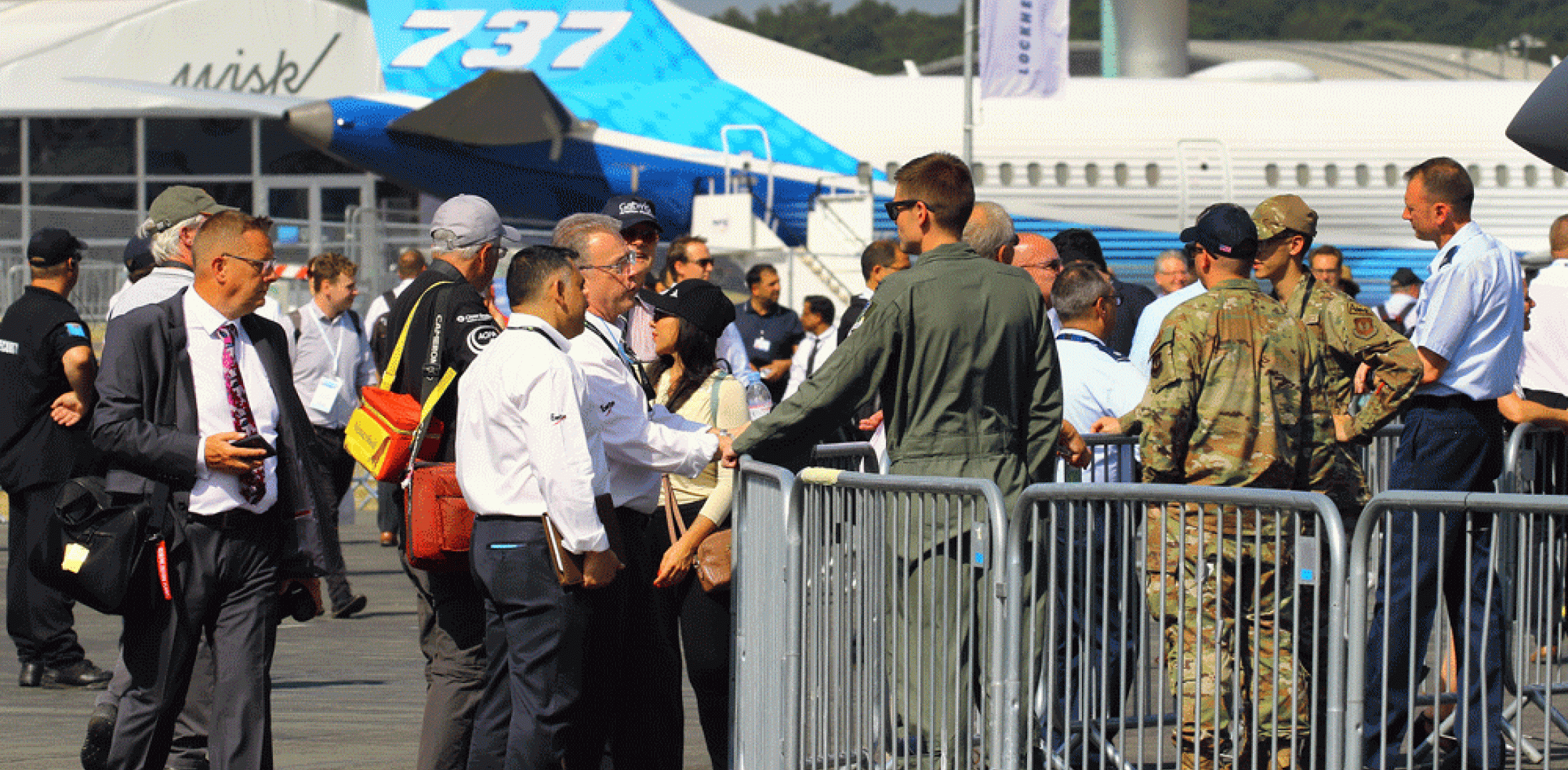Aerospace and defense companies need to urgently recalibrate their approach to recruiting and retaining skilled employees or risk a worsening brain drain with talent gravitating to other technology sectors, according to a new report published today by management consultant McKinsey & Company. It says an industry with 50,000 unfilled positions is losing staff at a rate 6 percent higher than other sectors and at the same time is losing out in recruiting new talent due to factors including a failure to compete with tech companies’ pay rates that, for example, typically run twice as high for software engineers.
But the skills deficit is just one of several challenges facing the industry, with McKinsey and other experts urging companies to double down on urgent fixes for worsening post-Covid supply chain issues and invest more aggressively to address the existential threat posed to aviation if it does not meet the acknowledged imperative to achieve net-zero carbon status.
According to one of four new reports issued by McKinsey at this week’s Farnborough air show, industry funding for what it calls future air mobility (FAM) has increased by 25 percent over the last six months. After a period of heavy backing for new eVTOL aircraft, the company’s analysts now see a shift towards sustainable technology to be applied more broadly across the aerospace sector, including conventional takeoff and landing aircraft that could be powered by battery electric, hybrid, and hydrogen propulsion systems. Whereas eVTOL start-ups attracted 70 percent of the FAM capital available last year, McKinsey says that has dropped to 50 percent of the current $14.7 billion total.
Robin Riedel, co-lead for the McKinsey Center for Future Mobility, told a Farnborough air show press briefing on July 20 that his team is seeing a longer-term “portfolio approach” to investments in sustainable technology, including efforts to achieve rapid improvements in new propulsion systems, as well as efforts to launch supersonic and hypersonic flight.
In his view, it will take until the 2030s for advanced air mobility (AAM) to become an established market and between 50 to 80 percent of the start-ups involved in the gold rush will not achieve a return on their efforts. But he is adamant that aviation must rise to the environmental challenge or face the very real prospect that it could become a pariah, accounting for as much as 10 percent of global carbon emissions (five times current levels). “Storytelling is a big challenge [for the industry] because at this moment in time we still seem like a dirty industry,” he concluded.
At investment bank Lazard, Michael Richter, managing director and global head of aerospace and defense, tempered expectations of rapid paybacks for bets on what it more widely referred to as the AAM sector. “The reality is these [eVTOL] machines have yet to enter service, and regulations [need to be] qualified by the authorities and the ground infrastructure established,” he told AIN. “Progress is being made but the anticipated launch dates [generally around 2024 and 2025] are ambitious. It is more likely that initial machines will serve useful cargo roles in regions where terrestrial infrastructure is lacking.”
With sub-tier aerospace suppliers facing urgent difficulties relating to skills shortages, inflated raw materials costs, and diminishing returns over the life of a contract, Richter said that OEMs and Tier 1 suppliers are further consolidating their customer bases. “Sub-tier suppliers are often family-owned companies who do not have the financial strength to weather ongoing disruptions and delays in the supply chain,” he commented. “They may find themselves squeezed and less well-placed to secure new contracts which will, in turn, have them look to partnership or acquisition by bigger, complementary players. Rising inflation is also influencing this trend.”
While the aerospace sector might be able to overcome relatively short-term headaches like its over-reliance on limited sources of some key materials like Russian titanium and insufficiently resilient supply chains, McKinsey’s analysts repeatedly warned that the industry’s talent deficit will increasingly constrain growth and progress if it is not urgently and creatively addressed.
Associate partner Matt Schrimper called on CEOs to shift recruitment and retention to the top of their priority lists and be ready to instigate mold-breaking changes in the value proposition for their people. The crisis is especially acute in the software discipline, which is especially concerning given that the amount of code required by aerospace platforms doubles every four years.
Schrimper said that companies must face the fact that technology companies in other fields now offer markedly higher salaries for programmers. With personnel reportedly looking for a stronger sense of purpose and meaning from their work, aerospace companies have a potentially strong card to play in that they can potentially offer more opportunities for learning and professional growth than, say, a computer gaming start-up.
Lazard’s Michael Richter told AIN that the aviation sector doesn’t have to settle for second-best in competing for talent with tech companies. “Since the pandemic on both sides of the Atlantic, skilled, mostly senior aerospace personnel have exited the industry to take early retirement or take advantage of transferable skills, but equally the arrival of new sustainable technology aircraft programs is helping attract new talent from automotive and other industrial sectors,” he said. “Commercial pilot demand is becoming prevalent again, as is the need for engineering talent. Initiatives are coming in, such as apprenticeships and national aerospace clusters focusing on encouraging young people to consider aviation careers. Artificial intelligence, data, digitalization, and AAM are all helping to widen interest in aerospace.”
